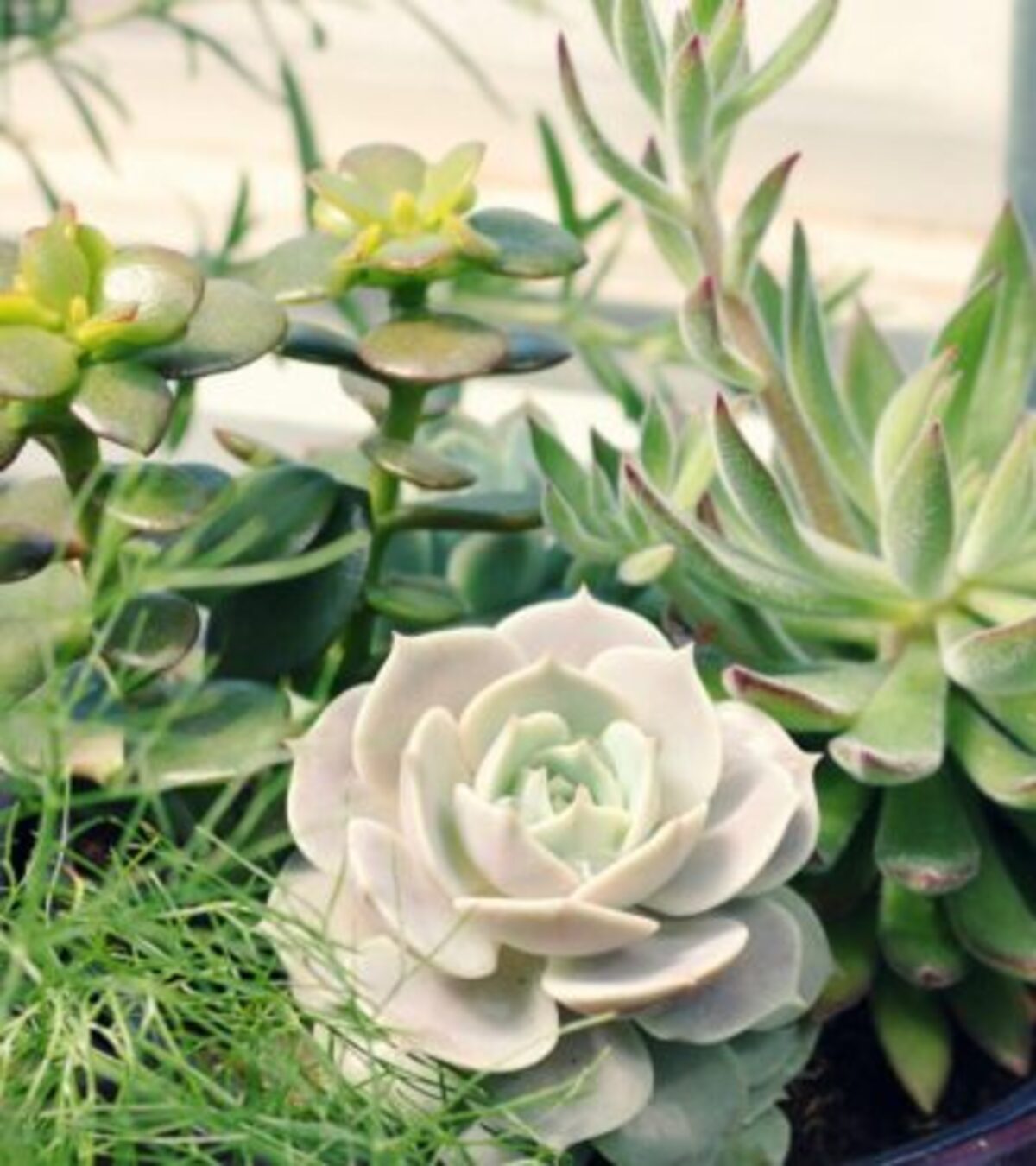Jade Plant Problems: 6 Common Issues And Solutions
Explore the most common jade plant problems and discover expert solutions to keep your Crassula ovata thriving indoors.

Jade Plant Problems: How to Diagnose and Fix Common Issues
Jade plants (Crassula ovata) are beloved succulents known for their resilience, attractive appearance, and ease of care. However, even the hardiest jade can encounter issues that leave owners puzzled and concerned. This comprehensive guide explores the most frequent jade plant problems, how to identify their causes, and provides step-by-step solutions to ensure your jade plant thrives year-round.
Table of Contents
- Leaf Drop in Jade Plants
- Wrinkled, Drooping, and Soft Leaves
- Overwatering and Root Rot
- Underwatering and Drought Stress
- Sunlight and Temperature Problems
- Pests and Diseases
- Prevention and Care Tips
- Frequently Asked Questions
Leaf Drop in Jade Plants
One of the most alarming signs for jade plant owners is sudden leaf drop. While these succulents are generally forgiving, dropping leaves usually indicates that something in their environment or care routine is off.
Causes of Leaf Drop
- Overwatering: The most frequent culprit. Jade plants have thick, fleshy leaves and stems designed to store water. Excess moisture in the soil can lead to root rot and cause leaves to fall off prematurely.
- Underwatering: Although more tolerant of drought, severely dry soil will eventually cause leaves to wrinkle and drop.
- Sudden changes in environment: Moving your plant into a different light or temperature zone can shock it, triggering leaf loss.
- Insufficient light: Extended periods of low or indirect light may weaken the plant, causing leaves to detach.
- Cold temperatures: Jade plants dislike cold drafts and can drop leaves if temperatures fall below 50°F (10°C).
- Old age: Lower, older leaves naturally yellow and drop off over time as the plant grows.
How to Fix Leaf Drop
- Check the soil moisture using your finger or a moisture meter. If the soil is soggy or doesn’t dry out within a week, reduce watering and improve drainage.
- Ensure the pot has drainage holes, and use a succulent-appropriate, well-draining potting mix.
- Move the plant to a brighter spot for several hours of indirect sunlight daily.
- Protect your jade from sudden drafts and avoid placing it near air conditioners or window sills in cold months.
Wrinkled, Drooping, and Soft Leaves
When jade leaves begin to wrinkle, feel limp, or lose their normal firmness, your plant is communicating a hydration issue. These symptoms can result from both underwatering and overwatering, leading to confusion.
Signs of Wrinkled and Drooping Leaves
- Wrinkles and soft texture: The leaves become wrinkled and feel soft due to loss of turgor pressure, usually from water imbalance.
- Limp growth: Stems or leaves droop downward, and the plant appears less upright overall.
- Discoloration: Leaves may also become pale or develop brown tips if the plant is stressed too long.
Causes and Solutions
| Cause | Diagnosis | Solution |
|---|---|---|
| Underwatering | Soil is bone dry, leaves are shriveled, plant appears wilted | Thoroughly soak the soil, let excess water drain, then resume less frequent watering |
| Overwatering | Leaves are soft/mushy, roots may smell musty, soil never dries out | Stop watering, repot in dry soil, trim away rotted roots, and water only when dry |
Best Practices for Hydration
- Water jade plants thoroughly then allow the soil to dry completely before the next watering.
- Reduce watering frequency in winter, often to once a month, as jade plants enter dormancy.
- Never let the plant sit in excess water; always empty saucers underneath pots after watering.
Overwatering and Root Rot
Jade plants are highly susceptible to overwatering, one of the most common reasons for decline and even death in these succulents.
Symptoms of Overwatering
- Leaves turn yellow, soft, or translucent before dropping off.
- Soil stays wet for several days after watering.
- Roots appear brown/black, mushy, or emit a foul odor.
- Stems at the soil line become soft and collapse.
How to Revive an Overwatered Jade Plant
- Remove the plant from its pot and gently inspect the roots.
- Trim away any rotten roots using sterile scissors or pruners.
- Allow the plant to air dry for a day before repotting into fresh, dry, well-draining succulent soil.
- Water sparingly, only when the top 2 inches of soil are dry, and check that the pot drains freely.
Underwatering and Drought Stress
While jade plants handle drought better than most houseplants, neglecting them for extended periods can still cause stress and visible symptoms.
Signs of Underwatering
- Leaves become thin, wrinkled, and start to curl or drop.
- New growth is stunted; plant looks shriveled.
- Soil pulls away from the side of the pot and feels dusty or hard.
Correcting Underwatering
- Water deeply to rehydrate the plant, ensuring thorough soaking.
- Avoid frequent, shallow watering as jade plants prefer a cycle of deep watering and extended dryness.
- Resume a consistent watering schedule based on the plant’s light and seasonal needs.
Sunlight and Temperature Problems
Jade plants flourish under bright, indirect sunlight. Poor light or excessive shade can cause leaf loss, leggy growth, and dull coloration.
Symptoms of Improper Sunlight
- Leggy or stretched stems, wide gaps between leaves.
- Leaf drop or fading color when in too much shade.
- Sunburn (brown or red blotches) if suddenly exposed to direct, harsh sunlight without acclimation.
Solutions for Light Issues
- Place your jade plant in a spot with 4–6 hours of bright, indirect light daily.
- Acclimate slowly to increased sunlight to avoid sunburn.
- Supplement with a grow light in dim homes or during winter months.
Temperature Considerations
- Maintain indoor temperatures between 60–75°F (16–24°C).
- Protect from sudden drafts, especially during winter.
- Avoid exposure to temperatures below 50°F (10°C) for prolonged periods.
Pests and Diseases
Like most houseplants, jade can occasionally be affected by pests and fungal issues, especially if already stressed by poor care.
Common Jade Plant Pests
- Mealybugs: Appear as white, cotton-like masses on stems and leaf joints. They feed on plant sap and cause yellowing leaves.
- Spider Mites: Cause stippling on leaves and very fine webbing. Leaves may become speckled or bronze.
- Scale: Hard, shell-like insects that attach to stems and suck sap, leading to leaf drop.
How to Treat Pests
- Isolate the plant to prevent spread to other houseplants.
- Use a cotton swab dipped in rubbing alcohol to remove mealybugs and scale.
- Spray with insecticidal soap, neem oil, or a diluted dish soap solution as needed.
- Repeat treatment weekly until pests are eradicated.
Fungal Problems
- Root Rot: Usually due to overwatering, causes roots to turn black and mushy.
- Leaf Spot: Brown, black, or red spots that form on leaves, often in humid or poorly ventilated conditions.
How to Manage Diseases
- Remove and discard infected plant material.
- Improve air circulation and avoid misting leaves.
- Repot using sterile tools and clean pots to prevent reinfection.
Prevention and Care Tips
With the right care, most jade plant problems are preventable. Follow these tips to ensure a healthy, vibrant jade plant for years to come:
- Use a fast-draining succulent or cactus mix and a pot with drainage holes.
- Let the soil dry completely between waterings—water less in winter and more if grown in bright light or warm temperatures.
- Keep your plant in a bright location with several hours of indirect sunlight daily.
- Wipe leaves gently with a damp cloth to remove dust and check for pests regularly.
- Fertilize sparingly during spring and summer using a balanced, diluted succulent fertilizer.
- Repot every 2–3 years, or if roots become crowded, refreshing the soil each time.
Frequently Asked Questions (FAQs)
Why is my jade plant dropping leaves even though I water it?
Overwatering is the leading cause of leaf drop in jade plants. These succulents need soil to dry out fully between waterings. If the soil remains soggy, roots may rot and leaves will drop as a stress response. Always check soil moisture and let the top inch or two dry before watering again.
What should I do if my jade plant has wrinkled and soft leaves?
Wrinkled and soft leaves are usually signs of water imbalance—either too little or too much. Check soil dryness; if bone dry, water deeply. If soil is wet and leaves are mushy, reduce watering frequency and consider repotting if root rot is suspected.
How can I tell if my jade plant is suffering from root rot?
Symptoms of root rot include yellowing, mushy leaves, soft stems, and a foul odor from the soil or roots. If present, unpot the plant, trim rotted roots, and repot in dry, fresh succulent soil.
Can insufficient light cause problems in jade plants?
Yes. Jade plants deprived of sufficient light grow leggy, with sparse leaves and weak stems. Provide 4–6 hours of bright, indirect sunlight daily for best health.
Are jade plants prone to pests?
Jade plants are generally pest-resistant, but may develop mealybug or scale infestations, especially when stressed. Inspect regularly and treat promptly with rubbing alcohol or insecticidal soap if pests appear.
How often should I water my jade plant?
Water thoroughly when the top 1–2 inches of soil feel dry. In summer, this may be every 2–3 weeks; in winter, as infrequent as once a month, depending on indoor conditions and light levels.
Key Takeaways
- Monitor your jade plant’s soil moisture and light exposure for the best growth.
- Err on the side of underwatering rather than overwatering; succulents store ample water in their leaves and stems.
- Address symptoms promptly—leaf drop, wrinkling, or discoloration are early alerts to environmental or care issues.
- With consistent attention to watering, soil, light, and pest management, jade plants will reward you with lush, long-lasting growth.
References
- https://www.epicgardening.com/why-is-jade-plant-dropping-leaves/
- https://www.bhg.com/gardening/houseplants/care/jade-plant-floppy-leaves-wrinkled/
- https://garden.org/thread/view/53142/Jade-plant-problems/
- https://www.melindamyers.com/articles/leaves-of-jade-plant-are-wrinkling
- https://www.gardeningknowhow.com/houseplants/jade-plant/limp-jade-plant-help.htm
Read full bio of Srija Burman












